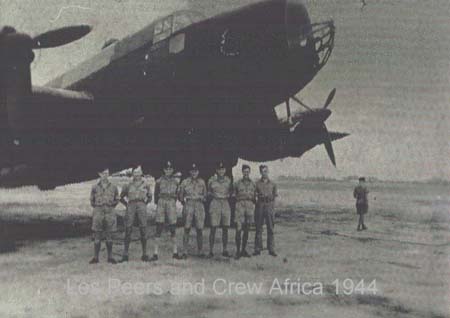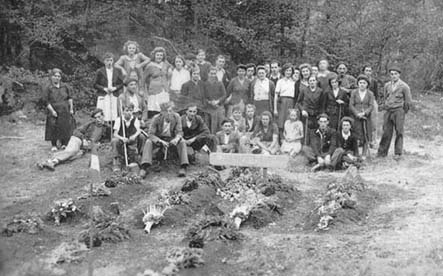FRENCH RESISTANCE AND TOWNSHIP 60TH ANNIVERSARY OF LIBERATION
Background
4624 Sqn have been approached by the
Mayor of the town of Lannemezan in southern France, near the Spanish border, to
attend 60th anniversary ceremonies of liberation, specifically relating to the
close association they have to the RAF and in particular 624 Sqn, who played a
pivotal role in their survival in the fight against the occupying forces.
4624 have hosted the 624 Squadron
Association since 1989 and are the holders of their F540 records. The main
event in history that the local villagers and resistance fighters focus on is
the role of 624 Sqn resupplying the resistance fighters operating within the
Pyrenees, and the loss of a specific Halifax aircraft and crew during a low
level night-time supply drop.
There are two “web” sites that give
considerable detail. They are run by
the family of the Canadian pilot and a local French Canadian resident. Both have contributed to this document and
the source details and other sites are available if required.
History
624 Sqn operated, at the time from
Blida airfield in North Africa. The
Squadron aircraft at the time were mostly Halifax, but they also operated
Stirlings, Lysanders, Walrus, and on occasions, a Feisler Storche.
 624 Sqn at
Blida
Primarily assigned covert
operations, 624 Sqn provided the aircraft and crew to meet the Secret
Operations Executive’s (SOE) requirements, such as supply drops, dropping
secret agents and propaganda leaflet drops into enemy territory. The supply drop in question was for the
Marquis operating within the Pyrenees.
They were engaged in a substantial fire-fight with an SS Panzer
Division. With medical supplies and
ammunition resupply desperately needed, an urgent request was put to SOE to
provide a supply drop. This was given
to Canadian Pilot Officer Les Peers and his British crew for the night of 14
July 1944. From the contemporary
reports, the Halifax circled high at least three times with the target area
cloud covered. On it’s final pass, it
struck tall trees and then impacted into the mountainside at approx. 1400m on
the Pic du Douly which is 1650 m. The
aircraft was completely destroyed on impact with no survivors.
624 Sqn at
Blida
Primarily assigned covert
operations, 624 Sqn provided the aircraft and crew to meet the Secret
Operations Executive’s (SOE) requirements, such as supply drops, dropping
secret agents and propaganda leaflet drops into enemy territory. The supply drop in question was for the
Marquis operating within the Pyrenees.
They were engaged in a substantial fire-fight with an SS Panzer
Division. With medical supplies and
ammunition resupply desperately needed, an urgent request was put to SOE to
provide a supply drop. This was given
to Canadian Pilot Officer Les Peers and his British crew for the night of 14
July 1944. From the contemporary
reports, the Halifax circled high at least three times with the target area
cloud covered. On it’s final pass, it
struck tall trees and then impacted into the mountainside at approx. 1400m on
the Pic du Douly which is 1650 m. The
aircraft was completely destroyed on impact with no survivors.

PO Les Peers
and crew
It appears that, because of the cloud cover, the aircraft was
about 8kms off target and therefore into the higher range of the Nistos at Pic
du Douly with an absence of valleys.
The explosion of the impact was heard by many. The following morning, a
shepherd boy found the crash site and ran to the local Mayor who, along with
others went to the site. The following
day, with the resistance notified, the townspeople returned to remove the
unrecognisable bodies of the crew. The
Maquis provided protection during this difficult task.
Some supply containers were
recovered and the Maquis removed ammunition and grenades to enable a continued
action against the panzer Division. The bodies were buried in the empty supply
containers under earth and ferns.
Within a week, a small fenced area was created around the grave area,
despite the constant attention of the German army in the area. This would have a huge impact on the local
population over the following days.

Once the Germans found out about the
air drop and crash site they interrogated the local population. This meant rape, torture and summary
execution of the villagers. Many of the
resistance families ensconced in the woods in the Pyrenees were rounded up and
shot. Three villages were awarded the
French Croix de Guerre for their resistance to the Nazi occupiers. Despite the oppression, the villages
continued to maintain the grave site, improving it when they could. The farmer who controlled the gate to the
site would berate any person not taking flowers to the graves. Only when covered in snow are fresh flowers
not laid daily. The grave site was
primarily maintained by Monsieur Jean Bordes, a Resistance veteran, who was awarded a decoration by the Canadian
Government in recent history for looking after “one of it’s sons”. To date, there has been no involvement from
the UK other than inclusion of the names in the Runneymead memorial as the war
Graves Commission considered the 624 Sqn crash site too inaccessible to include
in it’s maintenance agreements.
In 1994, with the assistance of the
French Govt. the local communities, paid for the reconstruction of the site
into a permanent structure that could withstand the rigours of the weather in
that region. The French Air Force used
helicopters to airlift the heavy materials to the site.

Site after the rebuild
As we approach the 60th anniversary
of the crash and of the liberation of France, there is a strong feeling amongst
the local community that this may be the last year that any large meaningful
ceremony can be held, with so few survivors still alive. The pressure for the surviving veterans of
624 Sqn and modern air force in the shape of 4624 as custodians of the 624
history to attend is growing. Several
hundreds of people are expected to attend the three ceremonies. A torch light parade through the town of
Lannemezan Friday evening 2nd July, a guard of honour at the grave site on Pic
du Douly Saturday morning 3rd July and a ceremony at the war memorial in
Lannemezan Saturday midday 3rd July.
The following demonstrates the
feeling that still pervades the foothills of the Nistos. I quote from a recent
e-mail from the “unofficial CWGC representative” who is acting as a go-between;
“I can tell you this much about the
Résistance Fighters "they are tickled pink at the idea of having the RAF
over" their attitude is the following "The RAF was essential in
our battles without their supplies we'd have gone to the death camps it is
that simple" “.
The RAF is 624
BACK to the 2004 Reunion Page 
©RM

